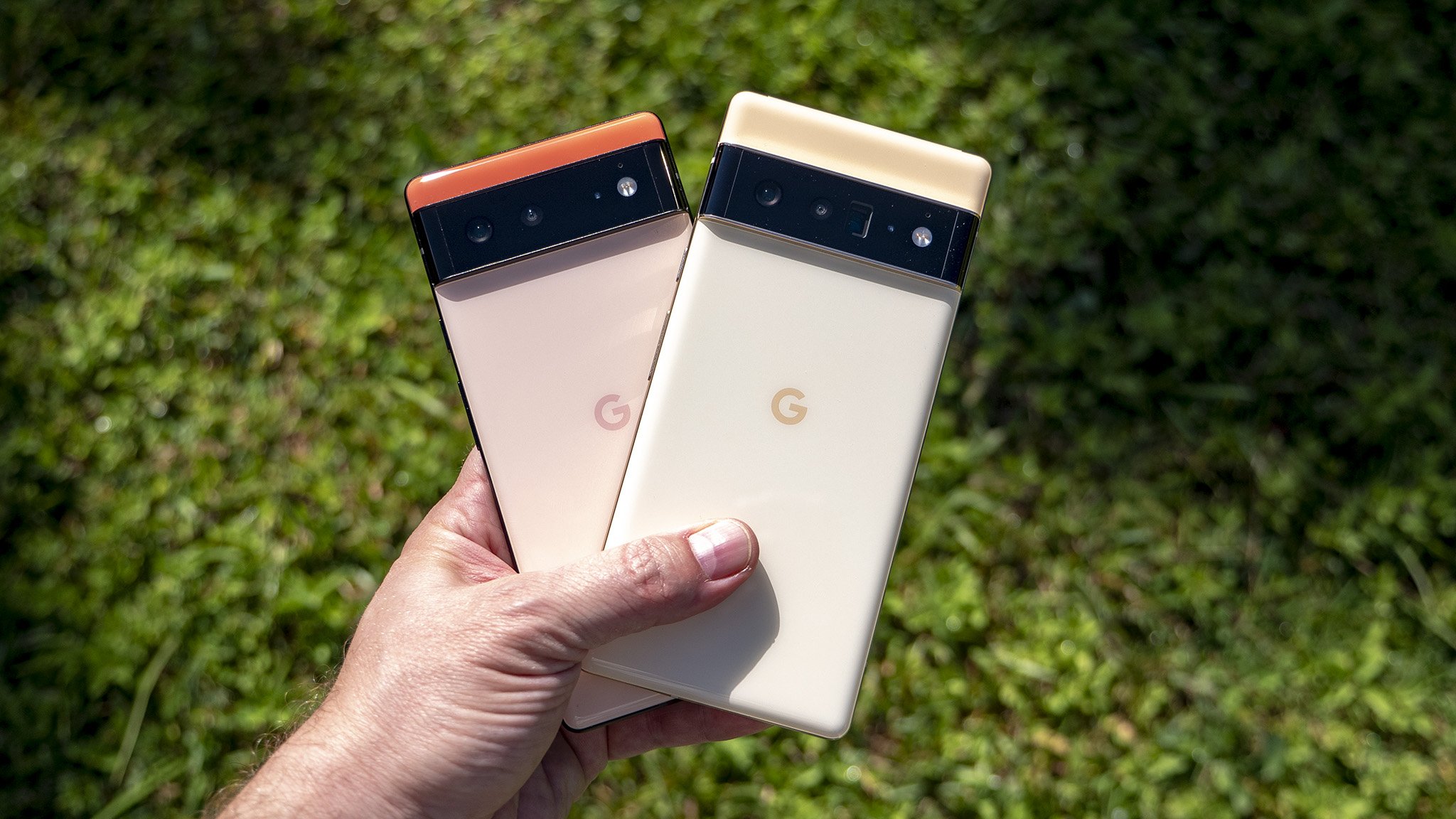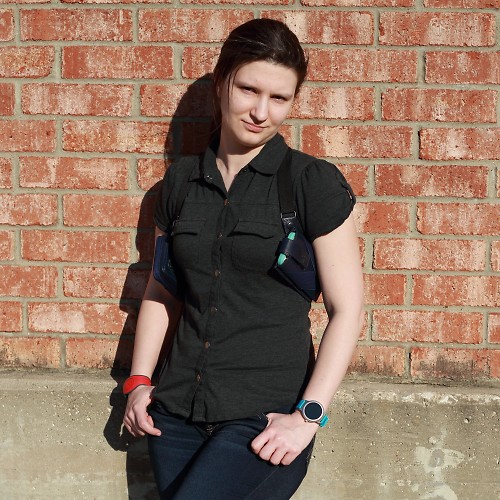While we're excited for the new Google Pixel every October, the Pixel 6 and Pixel 6 Pro launch is about so much more than just new phones. It's the real-world debut of its first in-house chipset with Google Tensor, and Google is using the Pixel 6 as the launch bed for a new era of Android design, Material You. Once you combine that with the first significant camera update Pixels have seen in half a decade and half a decade of system updates, the Pixel 6 and 6 Pro very well could be the best Android phones of 2021.
We've had our Pixel 6 and 6 Pro models in for less than 24 hours, but honestly, it didn't even take two hours to realize how much of an improvement they are over the previous three generations of Pixels. From the lightning-fast AI capabilities of Google Tensor to the polished perfection of an ever-growing fleet of Pixel-exclusive features, here's why the Pixel 6 or Pixel 6 Pro is probably going to be your next phone.
Google Pixel 6 and Pixel 6 Pro hands-on: Price and availability
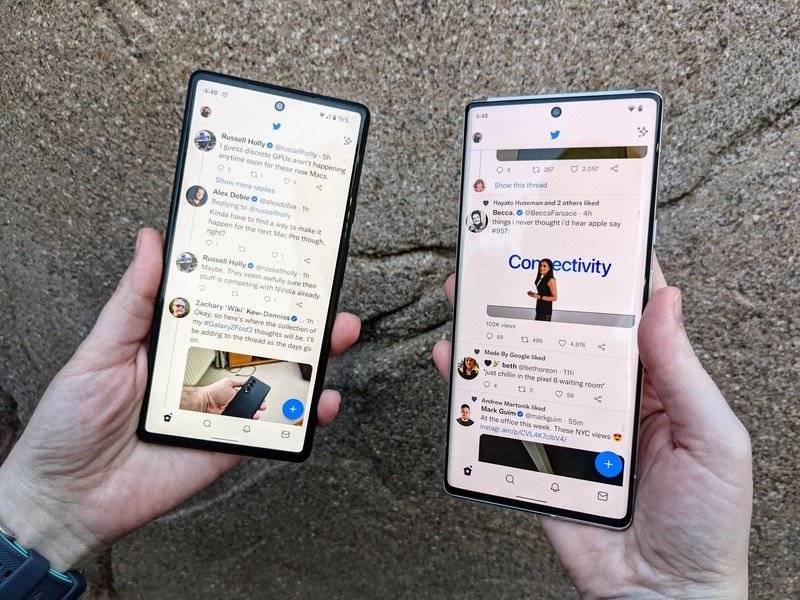
Google announced the Pixel 6 and the Pixel 6 Pro at the 2021 Pixel event on October 19, 2021. Both the Pixel 6 and Pixel 6 Pro are Google's first completely in-house designed phones and are powered by the first-ever Google-built system-on-a-chip, the Google Tensor.
Pixel 6 comes in Stormy Black, Kinda Coral, and Sorta Seafoam colors and starts at $599 for the 128GB variant. A variant with 256GB of storage will also be available for purchase.
Pixel 6 Pro can be found in Stormy Black, Cloudy White, and Sorta Sunny colors and starts at $899 for the 128GB variant. A variant with 256GB or 512GB of storage will also be available for purchase.
Both phones can be purchased unlocked at physical or online Google Stores, as well as all major retailers like Best Buy and Amazon.
All Pixel 6 Pro models will ship with the capability to connect to 5G mmWave networks. In addition, a special mmWave-capable Pixel 6 will be sold at AT&T, Verizon, and the Google Store for customers who want the additional network speeds in the U.S.
Google Pixel 6 and Pixel 6 Pro hands-on: The differences between both models
Both Pixel 6 models share a remarkable amount of core specs and hardware, from the chipsets to the primary two cameras and beyond. We'll get into design and aesthetic differences in a minute, but we've bolded the Pro's upgrade in this spec table to help you see where the improvements are and if they're worth you grabbing the Pro over the Pixel 6.
| Device name | Google Pixel 6 | Google Pixel 6 Pro |
|---|---|---|
| Chipset | Google Tensor | Google Tensor |
| Memory | 8GB | 12GB |
| Storage | 128GB or 256GB | 128GB, 256GB, or 512GB |
| Display | 6.4-inch, 1080 x 2400, OLED, 90Hz | 6.7-inch, 1440 x 3120, LTPO OLED, 10-120Hz |
| Rear Camera | 50MP, ƒ/1.85, 1.2μm (wide-angle)12MP, ƒ/2.2, 1.25μm (ultra-wide) | 50MP, ƒ/1.85, 1.2μm (wide-angle)12MP, ƒ/2.2, 1.25μm (ultra-wide)48MP, ƒ/3.5, 0.8μm, 4x optical zoom (telephoto) |
| Front Camera | 8.0MP, ƒ/2.0, 1.12μm | 11.1MP, ƒ/2.2, 1.22μm |
| Battery | 4614mAh30W Fast Charging12-23W Wireless Charging5W Reverse Wireless Charging | 5003mAh30W Fast Charging12-23W Wireless Charging5W Reverse Wireless Charging |
| Weight | 207g | 210g |
| Water and dust resistance | IP68 | IP68 |
| Colors | Stormy Black, Kinda Coral, Sorta Seafoam | Stormy Black, Cloudy White, Sorta Sunny |
We'll get down to those shiny new cameras in a bit, but the hardware difference you'll see and feel more than any is the screen: the Pixel 6 has a flat 6.4 90Hz display while the Pro has a curved 6.7-inch 2K display LTPO (low-temperature polycrystalline oxide) OLED panel with a variable refresh rate so you can get the high frame-rates you need while working or gaming, but you can ease back down to lower refresh rates when you're doing something like reading an e-book or checking the weather.
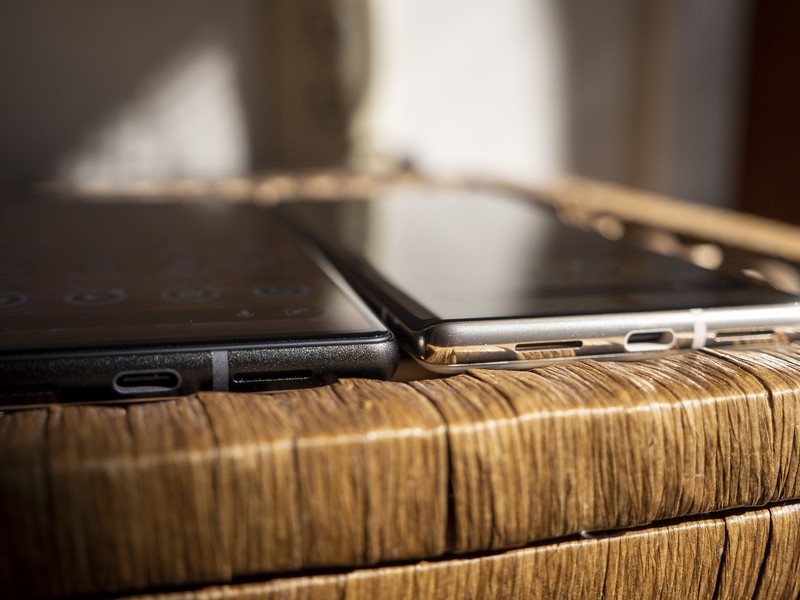
While most of the Android Central team finds the larger, curved, variable refresh rate screen on the Pixel 6 Pro more attractive, Ara Wagoner vastly prefers the flat panel on the Pixel 6. The smaller size makes it easier for one-handed use — though if you have smaller hands like hers, you'll still want a PopSocket for better reach — and the flat edges mean screen protectors will fit better, and the screen is slightly less vulnerable than a curved screen wrapping around the edges of the Pixel 6 Pro. LTPO OLED on the Pixel 6 Pro looks quite ravishing, however, and you will absolutely notice the smoother scrolling and animations when speed-swiping through Twitter or trying to clear that last mission you need to rank up.
The Pixel 6 has better colorways, but the Pixel 6 Pro has a better screen.
The battery difference between the two models is a mere 400mAh, which correlates with the larger screen needing slightly more power. The three-gram weight difference between models is also negligible, so you won't have to worry about the Pro being a brick-like the S21 Ultra.
That leaves the last significant distinction between models: the Pixel 6 got all the fun colors, and the Pixel 6 Pro got metallic shades instead. Don't get me wrong, gold and silver are great colors; it's just that the backplates set in that gold or silver frame just don't look as good — especially on the Sorta Sunny gold. Of course, both models come in black for those of you who despise color and joy in your tech, but the Kinda Coral and Sorta Seafoam Pixel 6 colorways clearly got the better end of the deal.
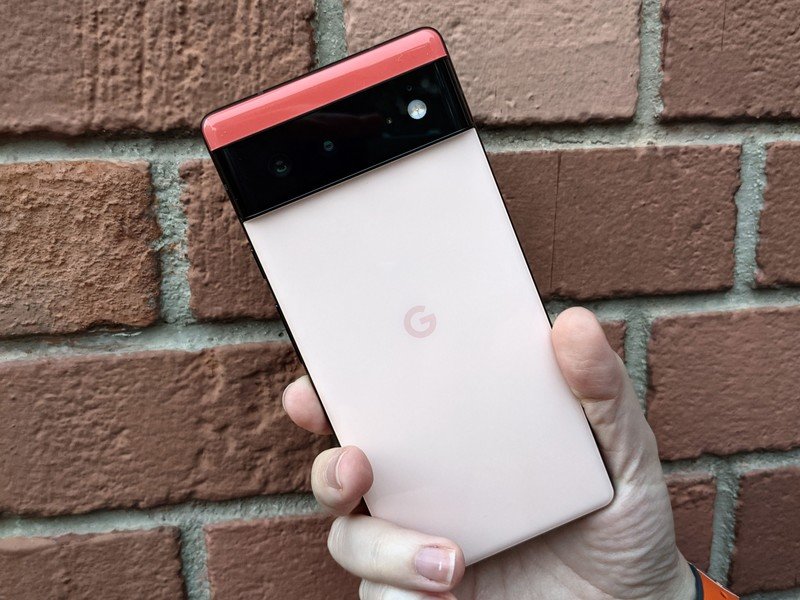
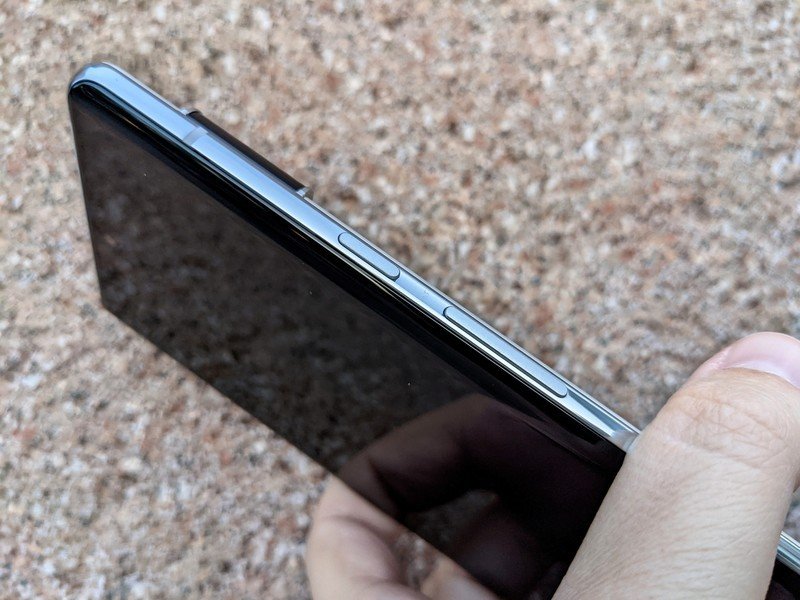
Source: Ara Wagoner / Android Central
The Kinda Coral Pixel 6 is indeed pink, not salmon as some of the renders made it seem, but it can still take on that sheen under warmer light sources. The black bumpers on the Pixel 6 don't look great in renders, but it looks nice in person, a matte black that still has a bit of a soft shine when it catches the light. By contrast, the Pixel 6 Pro's shiny bumpers reflect more light, but they also show smudges and scruffs. Whichever model you choose, there's a wonderfully sculpted groove between the power and volume buttons to help you distinguish which is which on feel as the power button lacks any specialized texture or bright colors.
Google Pixel 6 and Pixel 6 Pro hands-on: Google at the heart
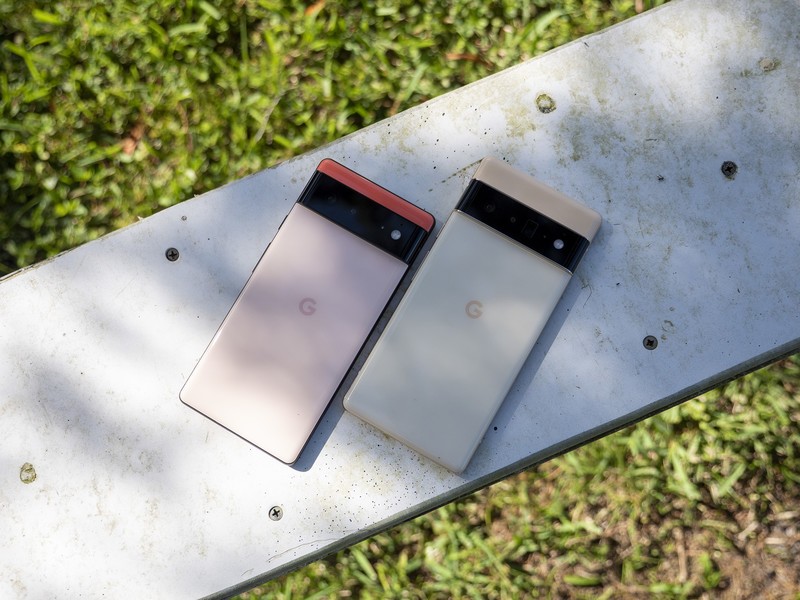
There's no mistaking the look of either of these Pixels. It's a look that only Google would be bold enough to pull off, and it's because the Pixel 6 family is the first family of devices from Google that's been completely developed in-house. That means everything from the processor itself to the gorgeous case was designed, sourced, and built by Google.
To back up an even more secure supply chain, Google has included its own Titan M2 co-processor that's built with security in mind. This is the follow-up to Google's original Titan M co-processor that enabled Pixel phones to be used as a proper multi-factor authentication key and ensured encrypted information on each Pixel phone stayed secure the entire time.
Tensor is Google's first system-on-a-chip, and its AI processing capabilities create a smarter experience on both Pixel 6 and 6 Pro.
The Titan M2 can be found alongside the Google Tensor, Google's first fully-developed in-house developed silicon. Google is using Tensor in place of a Qualcomm or MediaTek-developed solution and has tailored the entire Pixel 6 experience to play to Tensor's strengths.
As you might expect from a modern piece of Google software, Android 12 on the Pixel 6 utilizes Tensor's incredible AI-processing abilities to create a smarter experience. Of course, we've seen bits and pieces of this over the years — really, ever since Google began packing its Pixel Visual Core co-processor in Pixels, starting with the Pixel 2 — but the Pixel 6 adds in a significant number of new features.
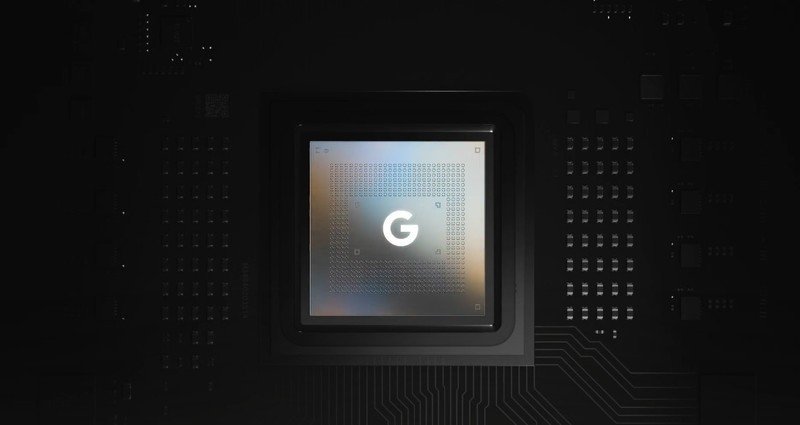
In many areas of the phone, Google is using the AI-based smarts of Tensor to create a more intelligent experience. While making a phone call to a toll-free number, for instance, you'll be able to see Google Assistant visually generate on-screen boxes pertaining to each menu option, each of which can be tapped to continue. Once you're through the menu, Google Assistant can even wait for you, keeping you from having to babysit the phone while waiting in line.
Voice typing is now powered by Assistant more than ever before and can understand commands while inputting text. This also means voice typing works in more places than ever, as Assistant should be able to insert text whenever possible.
Tensor makes Assistant smarter and faster than ever, including live audio translation, image translation, and taking your place while on hold on a call.
Translation features now work better and even faster than before, including live translation within messaging apps and media. At launch, Google supports 10 languages for translation within 11 messaging apps. Additionally, any media can be translated live with the Live Caption feature that was available on previous Pixel devices, but we expect performance to be even better here.
Translation has been available in Google Lens for many years now but should now work better than ever thanks to Tensor. The camera translation feature can be used by pointing your Pixel 6 camera at any object and letting Tensor do the work. At launch, Pixel 6 phones can translate 55 languages offline and a whopping 104 languages online.
Translation also works for conversations via Assistant Interpreter mode, where Assistant will translate dialog between you and another person that speaks a different language. Voice recorder — another feature that's been available on Pixels for a few years now — should also perform better thanks to Tensor.
Google Pixel 6 and Pixel 6 Pro hands-on: Material You is like a dream
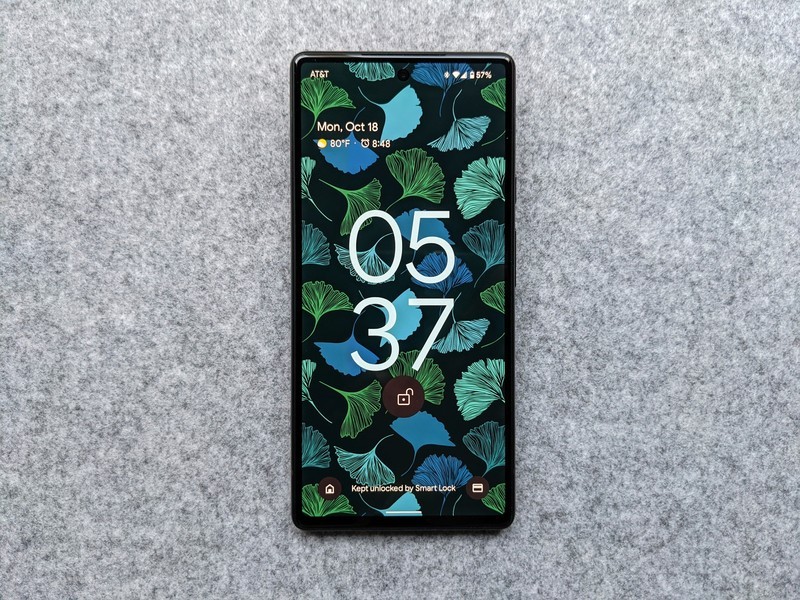
Material You has been teased and tested in pieces during the Android 12 beta, but the Google Pixel 6 series finally gives us the complete experience. All those fun new widgets, the dynamic colors, and the redesigned system UI come together for the first time with the Google Pixel 6. And as someone who has been theming her Android phones for almost a decade, Ara Wagoner almost cried at how beautiful the final UI looks.
If you remember back to Google I/O in May — or you've been using the Android 12 beta on your current Pixel — you'll likely be familiar with the new interface design for Quick Settings, volume, and brightness sliders and on that front. While some aren't fond of Quick Settings, only showing the first four toggles rather than six the way the old style did, it's pretty easy to see why Google did it. The old circular toggles were smaller and harder to tap, and by putting the titles inside the button, the toggles are easier to tell apart at a split-second glance.
Material You on the Pixel 6 also extrapolates four color palettes based on the sampled colors in your wallpaper, which touch everything from your settings to your widgets and home screen icons, to the colorings inside some system and Google apps. During the Android 12 beta, I complained about the colors here being too light and pastel — and many of the color palettes still are — but for wallpapers with bold colors, Dynamic Color is starting to brighter, bolder hues for the main theme color. Just beware when you set a lighter-colored wallpaper, that can make the clock on the lock screen get dimmer and frankly lackluster.
We've waited years for Google's widgets to actually look good again.
That's not the most exciting part, though. The most exciting part is that we finally have Material You widgets from most of the main Google apps! And yes, that is worthy of an exclamation point because Android widgets have sucked for years, allowing Apple to swoop in and trash Google by doing iOS widgets properly. So finally, this year, Material You is giving us the widgets we deserved five years ago, and they look absolutely amazing.
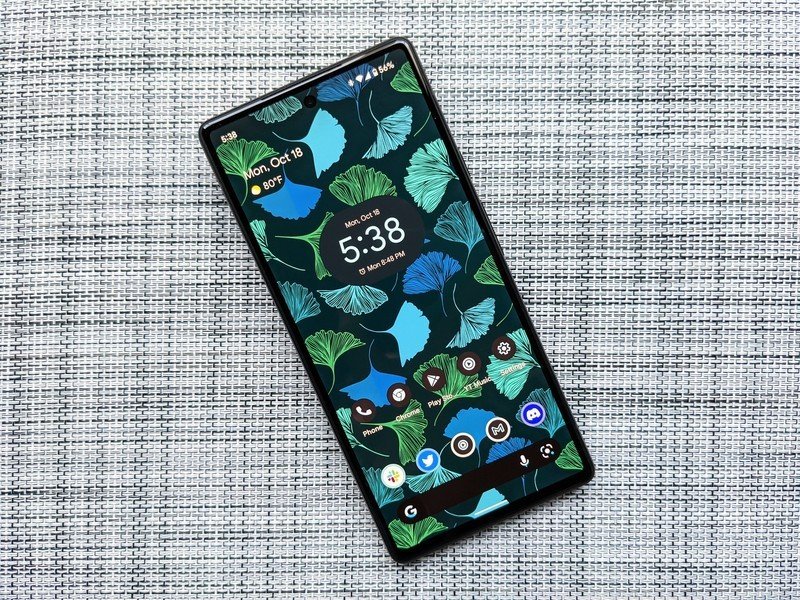
From Google Drive and Google Keep to Google Maps and YouTube Music, Rounded corners, fun shapes, and beautifully balanced colors help your home screen pop in just the right ways. In fact, the only real complaint we have with the Pixel 6's new widgets is that the Pixel Launcher's screen grid is too small to fit more than two on a page. (Thankfully, that's what the best Android launchers are for, and Smart Launcher 5 + Icon Pack Studio does Material You icons better than Google.)
Google is still in the process of releasing all the new widgets and updating its apps to Material You, but the Pixel 6 and 6 Pro are a wonderful start to a new era of Android.
Google Pixel 6 and Pixel 6 Pro hands-on: The best cameras get even better
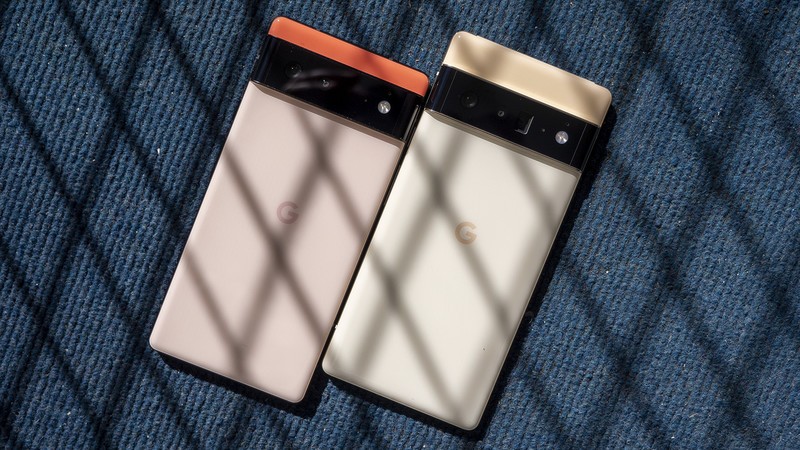
Nowhere will you find more new features than in Google's updated camera software, which boasts seven big new features as well as enhanced zoom for both phones. Center to the new features is Magic Eraser; a long-awaited feature Google announced in May 2017 but was unable to implement until Tensor came along.
The new Magic Eraser feature makes it possible to "magically" erase photobombers and other background distractions with a quick tap.
As you might imagine from the name, Magic Eraser makes it possible to "magically" erase parts of a photo you don't want there, like a photobomber in the background or an object that got in the way — like a fence or maybe even the corner of your finger. However, Google says it works best in some scenes over others, so we'll need to test and see what its limitations are.
Google's new Motion Mode hides two new sub-modes inside: Action Pan and Long Exposure. Long Exposure is a modified version of Google's Night Sight mode, taking the multi-frame exposure smarts of that mode but working toward adding a "creative blur" to night scenes. Typically, this shows up as light trails from cars or other lit-up moving objects.
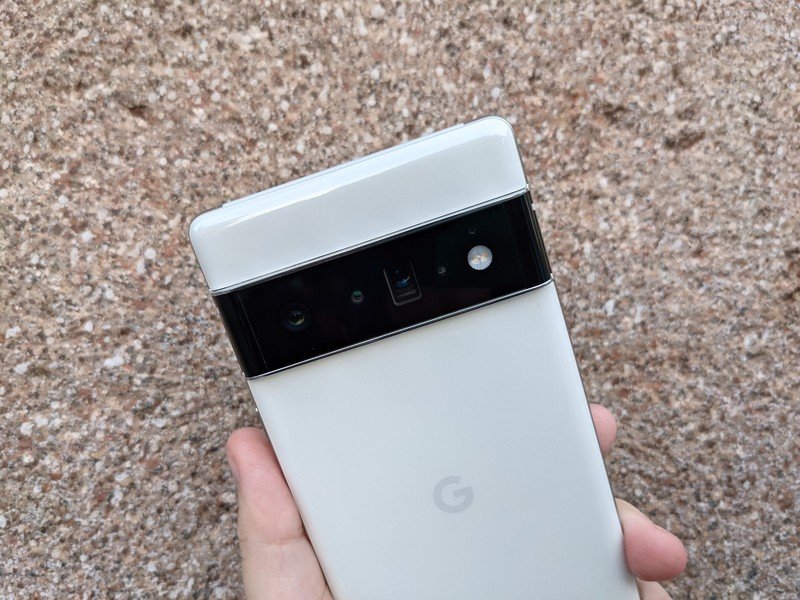
Action Pan is a brand new concept that focuses on capturing a moving object in crisp detail while blurring everything else around it, typically in the direction of the moving object. Google uses a train as an example, and it looks fantastic.
Similarly, Face Unblur works to keep the faces of moving people crisp while allowing the rest of the shot to look as naturally blurred as possible. If you've ever taken a picture of your kids running around and ended up with a blurry shot, Google's new mode is made for you.
Features like Face Unblur and Action Pan make a specific part of the image crisp while allowing the rest of the image to blur with natural action.
Google's updated auto white balance, auto exposure, and related algorithms to ensure that all skin colors should now show up in pictures correctly. Google didn't go into detail too much about this one, but it's likely that the camera weighs skin tones as a more important factor when determining the color temperature of the shot, ensuring that room lighting or other scene properties don't mess things up.
While Pixels have always been known for their photography prowess, video has always remained a bit on the mediocre side. This time around, Google is using the power of Tensor to ensure that video looks better than ever before, including real-time HDR processing shown right in the viewfinder. That means sunsets and other vibrant colors appear more correctly in the video and on your screen while recording.
Tensor is also enabling the Pixel 6 and Pixel 6 Pro to intelligently identify voices while recording videos from the front-facing camera — this one is probably most important for vloggers or when you might be taking a similar type of video — making it so that voices come through crystal clear in your videos while background noise is toned down.
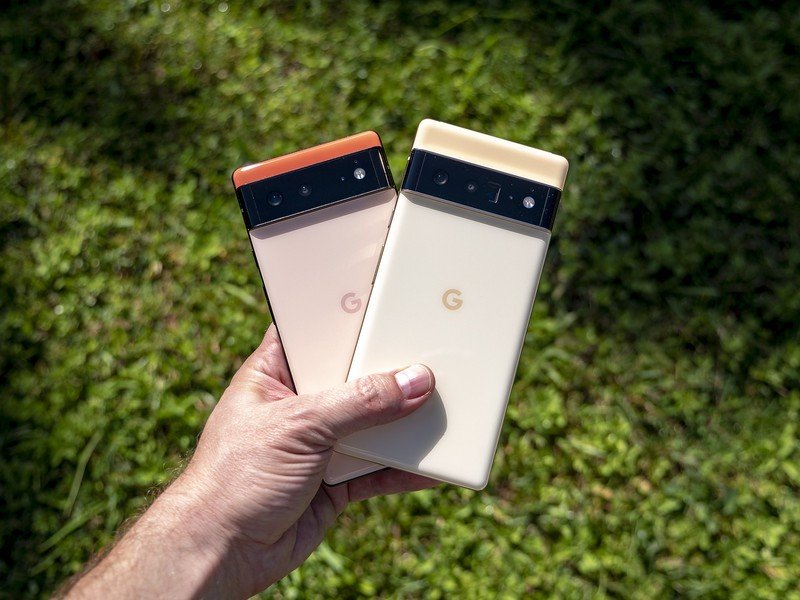
The smaller Pixel 6 might not have a telephoto lens with optical zoom, but it does feature the same 50MP main camera sensor that the Pixel 6 Pro has. That means, even at the same maximum 7x zoom level, we should see even better detail than Super Res Zoom has been able to produce on previous Pixel phones.
Both Pixel 6 models should have higher quality zoom because of the 50MP main sensor, but the 6 Pro can zoom nearly three times further.
The Pixel 6 Pro ups the ante further by adding in a separate 48MP sensor behind a 4X zoom lens, enabling 20x maximum zoom thanks to Super Res technology. Since Super Res zoom tech utilizes AI-based algorithms to digitally enhance your camera's zoom functionality, Tensor should make this method both faster and more accurate than before.
Google Pixel 6 and Pixel 6 Pro hands-on: What we still need to test
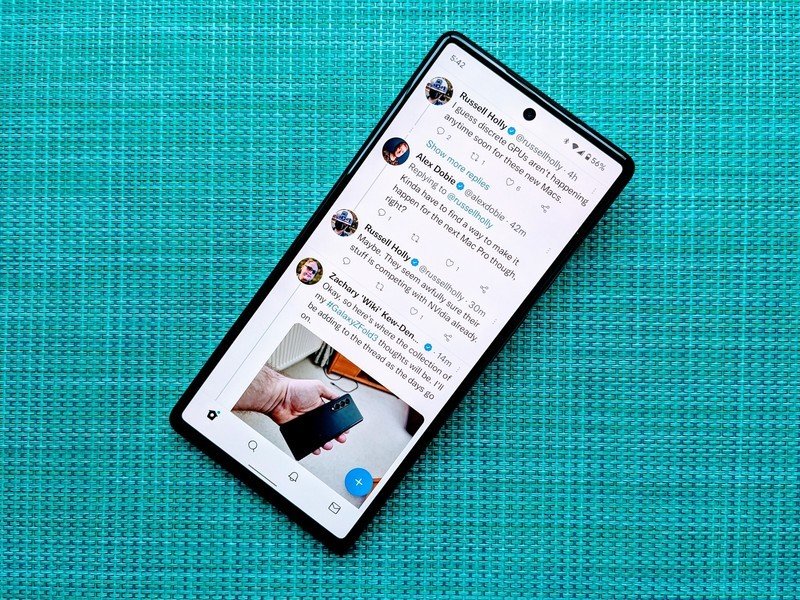
24 hours is not enough time to give the Pixel 6 and 6 Pro a true battery test, and we need to ensure that Tensor still holds up once we've finished moving into them. Those will be coming in our review as soon as we can fully put them through their paces. From what we've seen so far, there are two things we can say with absolute certainty: these are the prettiest Pixels Google has ever made, and the cameras are absolutely worth the years of waiting.
The telephoto lens and the variable-refresh LTPO OLED screen on the Pixel 6 Pro might not be worth the extra $300 to some of you — especially when the 6 has the same main two cameras and all of the new Pixel goodies — but going Pro this year will be a much more difficult question for many this year given the wider price gap between them.
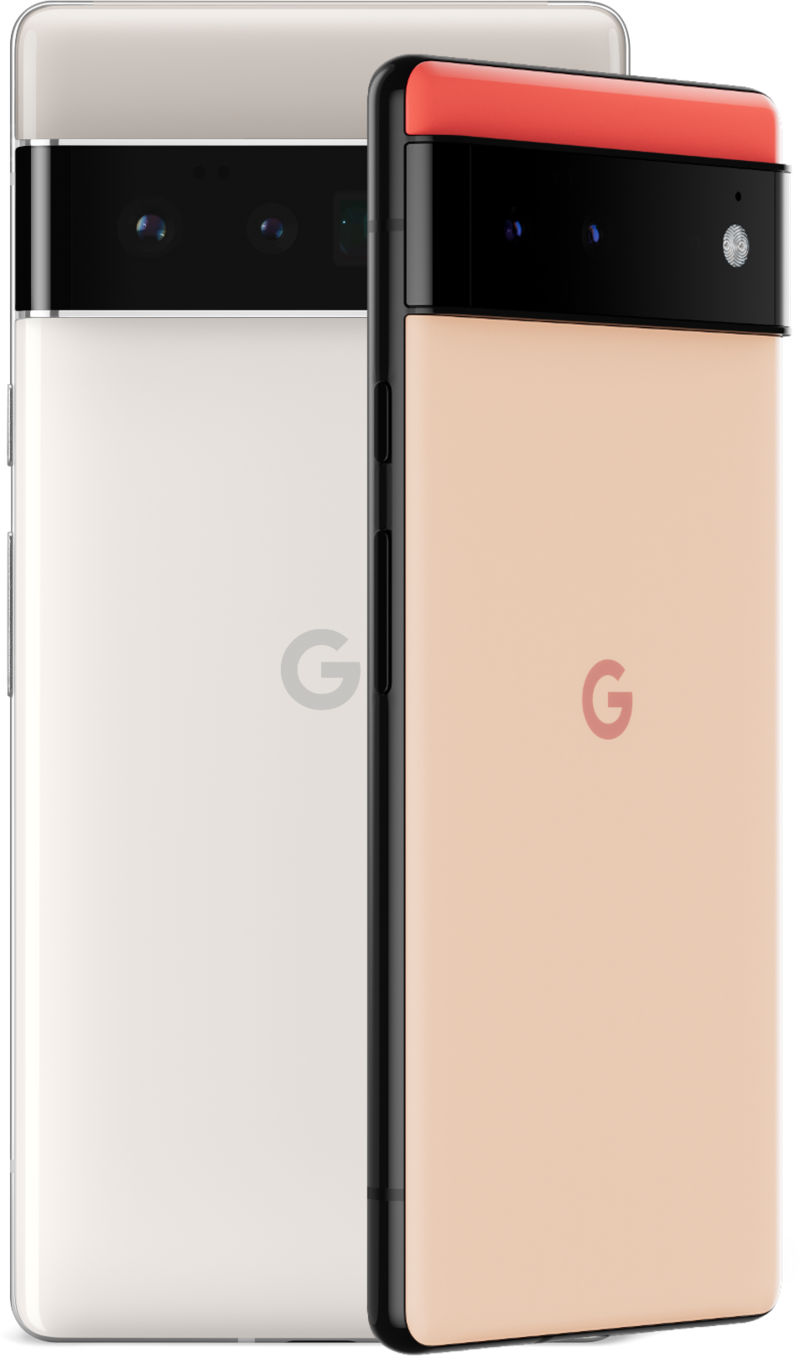
Google finally gives us a true flagship.
With Google's new, AI-focused Google Tensor chipset, major camera bumps (literally), and Material You in all its color-changing splendor, the Google Pixel 6 and 6 Pro are here to reward smartphone users who've been waiting for Google to get back in the flagship game.
Ara Wagoner was a staff writer at Android Central. She themes phones and pokes YouTube Music with a stick. When she's not writing about cases, Chromebooks, or customization, she's wandering around Walt Disney World. If you see her without headphones, RUN. You can follow her on Twitter at @arawagco.
